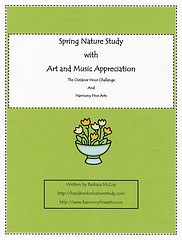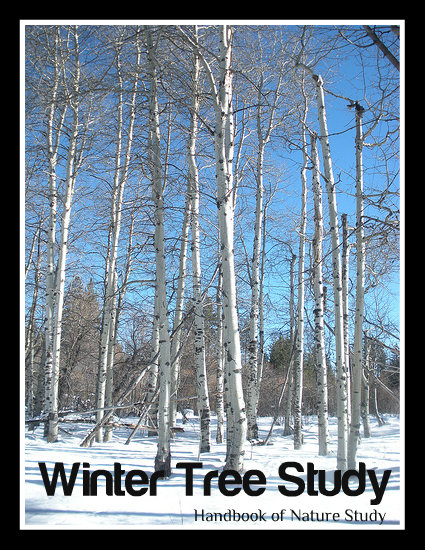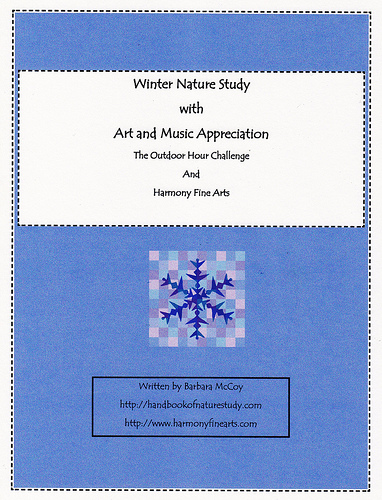I don’t usually enjoy the fall season…it is a melancholy time for me. I love the barefoot days of summer and the hot afternoons working in the garden or swimming in the pool. I would much rather be hiking in the green, green hills with wildflowers blooming at my side in the springtime. The promise of spring and the activity of summer are much more likely to gain my vote for “favorite season”. Winter is the enduring time, the time for preparing for spring and summer.
Autumn days are soon filled with colored leaves, falling leaves, and raking leaves. It seems to creep up slowly but then you wake up one morning to find that the leaves are starting to turn colors…..oranges, reds, yellows, golds, purples.
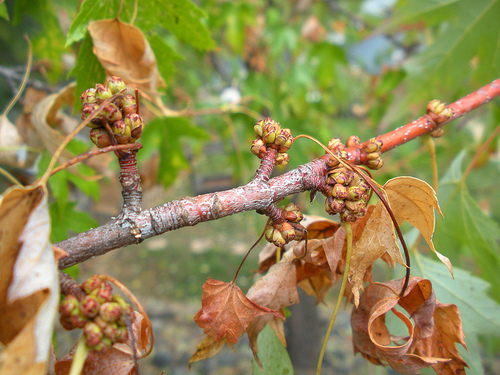
Observing autumn trees and looking close though, you will see spring’s leaves preparing for the winter.
So here we are in the middle of our autumn challenges and making the best of what the season has to offer. We gathered a few leaves to compare and my son reminded me that we did an in-depth study of leaves and their parts as part of our biology study.
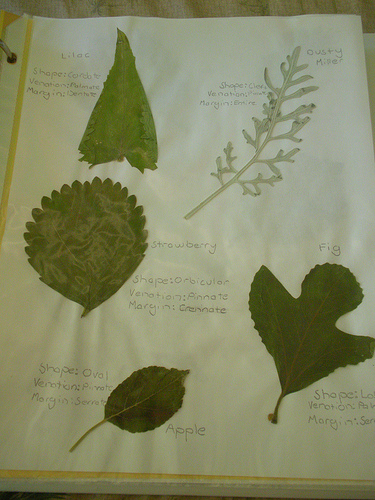
I went to the shelf and pulled out his biology notebook and his nature journal and we thumbed through to find our completed study.
So now what could we do to learn more about leaves?
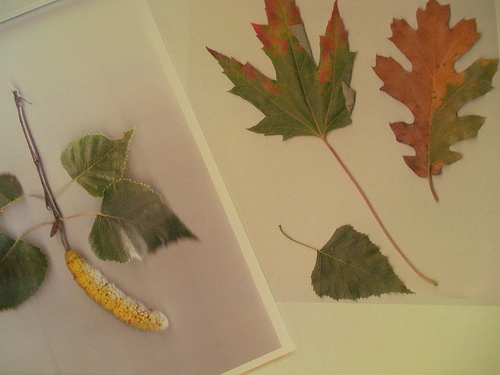
First of all, I shared with my son the idea that I gleaned from Amy at The Teachable Heart and her family’s study of autumn leaves. She actually color copied the leaves for their nature journals and they looked wonderful. I thought maybe we could do the same for our tree and other fall leaves that we were comparing just for a change in our journals.
We had already decided to choose another tree to study for a year-long tree study, the birch tree in our backyard. We gathered a few leaves and took a closer look at the tree while we were out there.
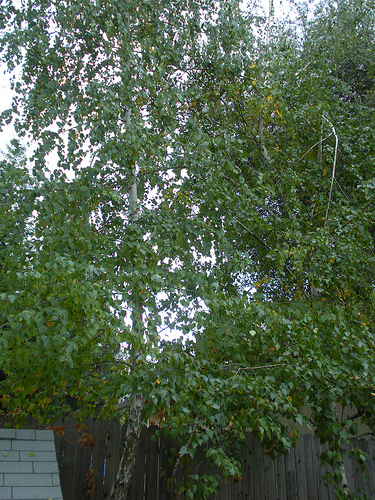
Welcome to our new tree for the year! We are excited to see what we can learn by looking at and comparing this tree to our previous tree study subjects.
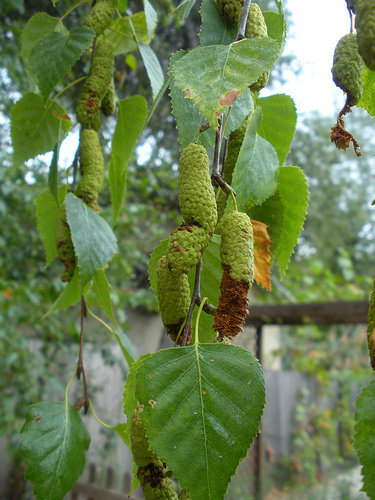
These catkins are such interesting things to look at and we looked up some more information in our tree guide after our outdoor time.
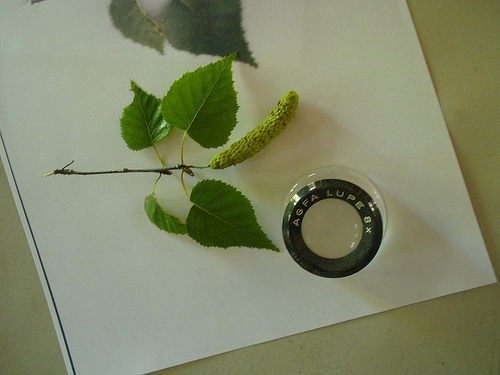
We brought some inside to look at with our loupes and to draw in detail in our nature journals.
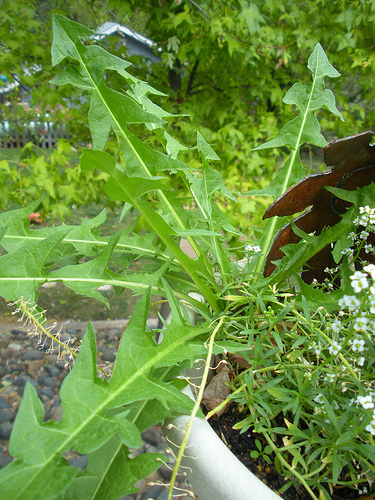
While we were out we looked at several other kinds of leaves….the dandelion growing in my pot is such an interesting shape in comparison to our tree leaves.
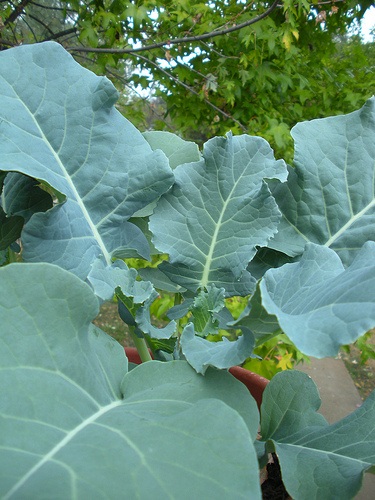
How about these leaves on the broccoli? Amazing gray-green color.
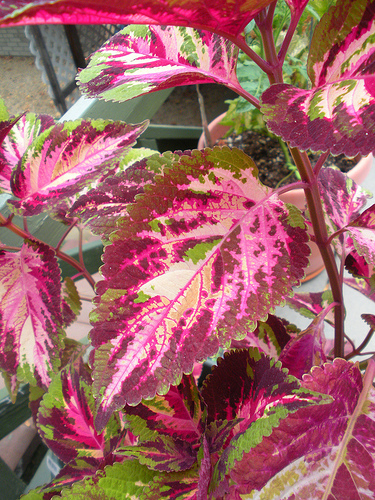
Our coleus is still giving us blazing amounts of color in the container garden on the deck. It makes me happy just to look at these leaves.
It had to go in my nature journal.
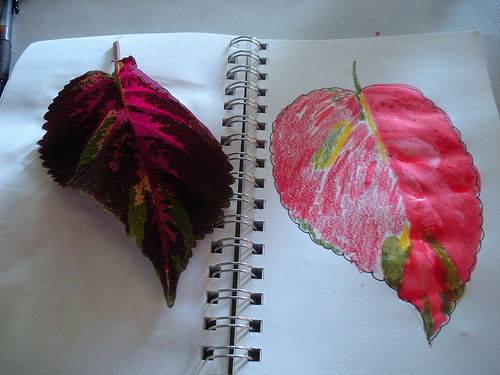
Watercolor pencils are fun to work with in your nature journals and we always have a set sitting on or near our work area table. It is easy to sketch quickly and then come back later to add water and details.
I will end my entry here since this journal is getting quite long. We are enjoying the connections between our biology study and our nature study using the Outdoor Hour Challenges.























